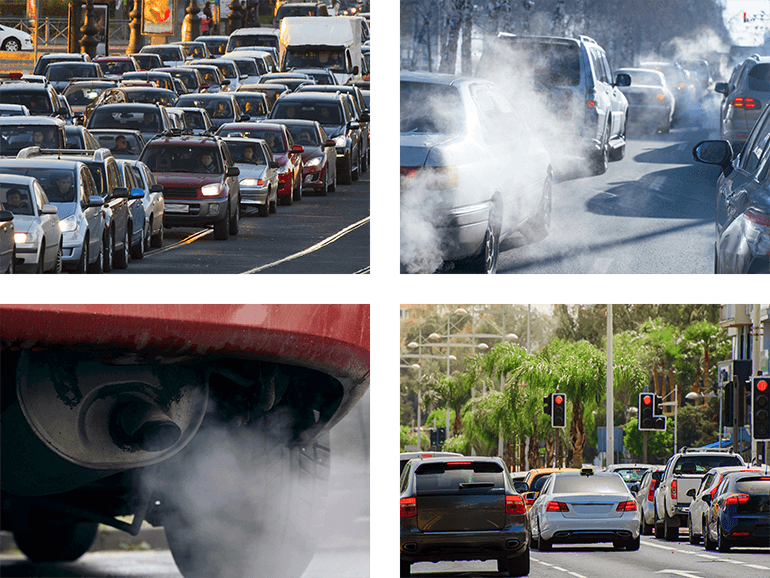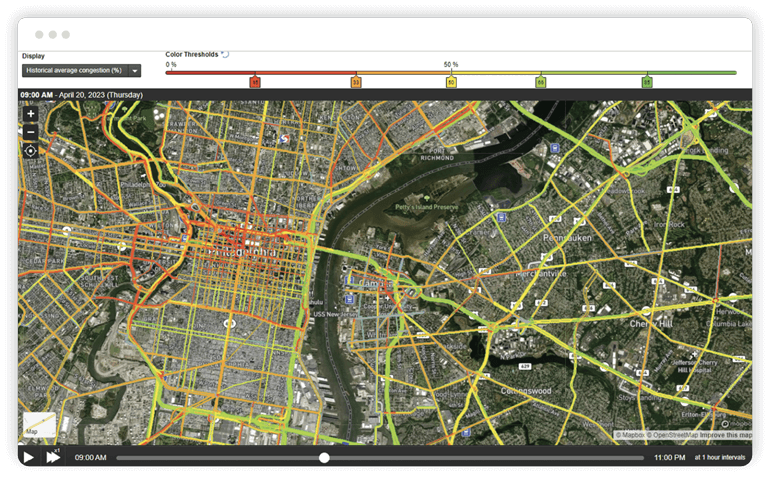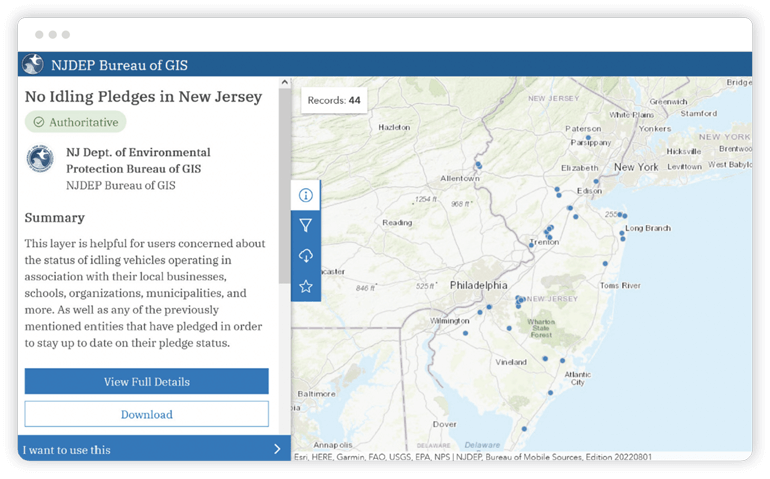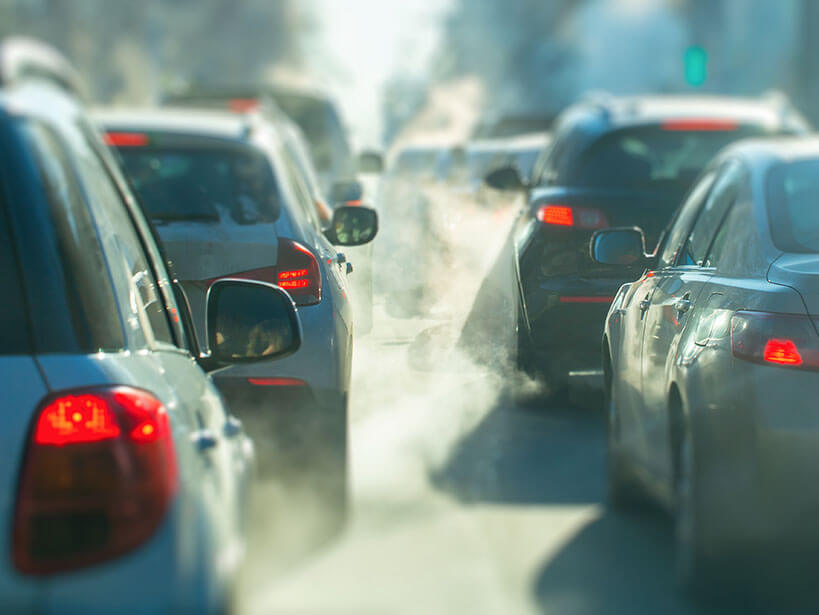Addressing the air quality implications of idle time
The reduction of vehicle idling is one policy being implemented by local and state governments to improve air quality. Policies meant to reduce air pollutants are especially necessary in areas where there is frequent, high traffic congestion. Understanding where traffic is at its worst may be the best place to apply certain policies.

Finding congestion hot spots
The NTDAS reports use average speed for 5-minute, 10-minute, 15-minute, or 1-hour intervals for road segments. The data is particularly sensitive to fluctuations in congestion. Under congestion conditions, the speed decreases sharply as stop-and-go conditions emerge allowing a user to measure changes to the system along and near a transit corridor. One way to visualize this is with the use of the Historic Average Percent Congestion Trend Map tool visual where the percent of Free Flow Speed represents congestion.

Improving policy decisions
The introduction or change to policies surrounding the transportation system can have a major impact not only on the location of the systems but also on the surrounding environment. Paired with the location of municipalities with known policies to curb vehicle idling, as shown here, future policy placement may be supported by determining where congestion is the most problematic. In addition, by understanding if enforcement of these policies is being conducted, a better understanding of the effectiveness of the policy can be understood before implementation in a new region.

There are numerous policies being put in place to reduce fossil fuel usage, improve transportation equity, and improve air quality. Determining the effectiveness of these policies requires reliable data and metrics that can indicate improved conditions.

Relevant roles:
- University faculty, including and not limited to assistant, associate and tenured Professors. Faculty can integrate NTDAS into their curriculum, or use if for teaching and training their class on advanced analytic tools that support contemporary research.
- University researchers
- Students

Relevant industries:
- Business
- Economics
- Transportation economics
- Public policy
- Environmental policy
- Health policy
- Public health awareness
- Geography and Environmental Sciences
- Sustainability
- Urban planning

Potential uses:
- Investigating particle concentrations during heavy congestion periods
- Correlating heath issues (ie cancer, respiratory ailments) with traffic and traffic congestion
- Recommending alleviatory measures at specific bottlenecks/rush hour


